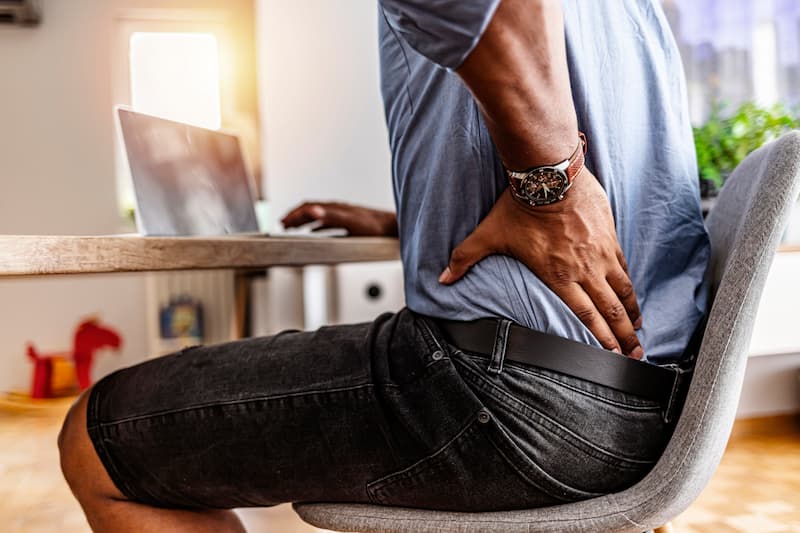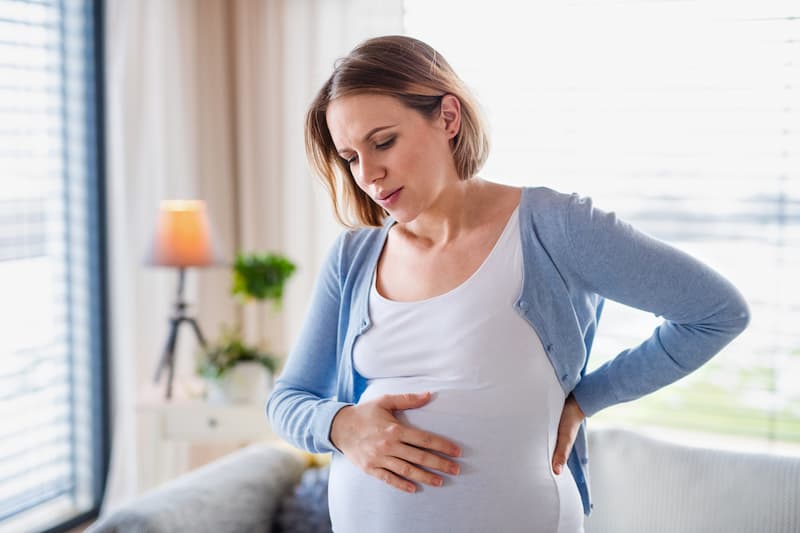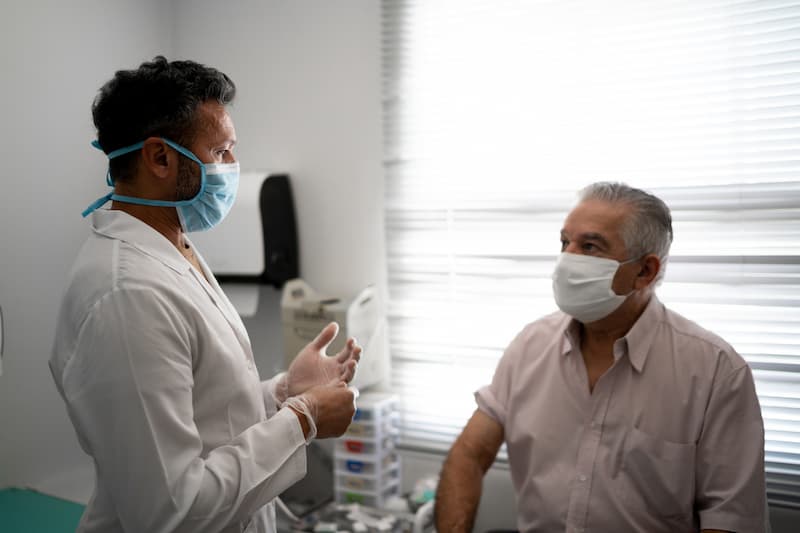 OUR LOCATIONSCall to book (212) 604-1300
OUR LOCATIONSCall to book (212) 604-1300
 OUR LOCATIONSCall to book (212) 604-1300
OUR LOCATIONSCall to book (212) 604-1300

Around 84 percent of adults reported experiencing lower back pain at some point in their lives. The pain could be felt on both sides of the spinal column or on just one side of the back, then extends to the buttock region. It could be the constant kind of pain or the type that comes and goes, ranging from a dull ache to a sharp and stabbing one. The exact location of the back pain, which can also include buttock pain, is a major clue to the precise cause of the problem.
So why exactly are you having lower back pain on the left side above your buttocks? Your lower back is made of a complex system beneath. Below the five vertebrae and the discs between lies the bones, the ligaments that hold the vertebrae together in place, and the tendons that attach the muscles to your spinal column. Located near your lower back are your kidneys, colon, pancreas, and uterus. Any one of these can be the cause of your lower back pain. It’s important to remember this when determining the culprit behind your pain.
Some causes of lower back pain on the left side are specific to that area while some may cause pain in any area of your back. Common causes of this type of pain are:
Scoliosis, kyphosis, and other conditions that affect your spine can cause back pain and breathing issues.

As back pain is a common issue among pregnant women, most of the time there’s nothing alarming about it. When a woman is pregnant, her posture changes since her front gets heavier, which strains her back muscles. Her abdominal muscles get weak as her stomach grows, which means less support on her spine. Her hormones cause the ligaments in her pelvis to relax in preparation for childbirth. Other causes include joint dysfunction, sciatica symptoms or sciatic nerve pain, and a urinary tract infection not treated properly, which can lead to kidney infection.
Males are not exempted when it comes to gender-exclusive lower left back pain problems. Men can develop inflammation of their epididymitis, which is the duct behind the testes. Common factors that set off this inflammation are viral or bacterial infections. Physical trauma can do this as well. This condition happens mostly to men 20 to 30 years old, but it can happen to males of any age. Antibiotics are the treatment for this bacteria, but more severe cases will require surgery in order to drain or remove the epididymitis.
There’s also testicular cancer, a condition that develops in about 1 out of every 250 males, according to the American Cancer Society. Lower back pain is one of the symptoms of this disease, accompanied by pain in the testicles, dull ache in the abdomen, groin pain, and a lump in one or both testicles. Treatment options include surgery, radiation, and chemotherapy.
Any common ache or pain can be triggered or aggravated by any infection. It just so happens that COVID-19 is unusually good at spreading body aches, including the upper and lower back. Although back pain is listed as one of the possible symptoms of the coronavirus, it doesn’t automatically mean you have it when you’re experiencing some back discomfort.
All infections lower our pain thresholds and the coronavirus is no different. If you were already having chronic back pain in the past, any infection can cause it to flare up. Although some COVID-19 patients experience worse back pain than others, it’s probably more about their vulnerability to back pain than it does about the coronavirus.
In a lot of cases, it’s not caused by the virus itself, but by the lifestyle changes brought on by the lockdown. People are complaining more about having back problems due to sitting all day long, especially those who are working from home.
Experiencing pain on one side of your back is not necessarily more alarming than central pain. See, there are two main types of one-sided back pain – back pain that could occur on either side but just happens to be on the left or right exclusively. Most ordinary back pain tends to be more pronounced on one side. The other is back pain referred to as a small category, one that comes specifically from structures that exist only on one side.

However, there are certain lower back pains that can’t be remedied by time and over-the-counter medications. You need to see your doctor if your pain doesn’t get better after a few weeks and/or there’s tingling, weakness, and numbness, especially in your legs. The same goes for sudden and severe pain as well. Other red flags include difficulties in urinating, fever, unexplained weight loss, and bowel control issues.
After your doctor has covered the basics (physical exam, medical history, and symptoms check), he may also order imaging tests such as X-rays, CT scans, MRI scans, ultrasound, and bone scans. A myelogram may also be needed so the doctor can check for nerve or spinal cord compression. Blood tests are also necessary to check for infections.
If your problem doesn’t require hospital treatment, home treatments are usually enough to address the problem. Time, rest, and pain relievers should do the trick. Self-care treatments include ice and hot packs, topical pain-relieving lotion or cream, nonsteroidal anti-inflammatory drugs, and limiting activities that can cause or aggravate your pain.
If your condition requires medical treatment, your potential pain relief solutions include physical therapy, muscle relaxants, nerve blocks, and anticonvulsant medication for certain nerve issues. A lumbar spine steroid injection (aka epidural) can provide you temporary relief from bothersome pain. Stronger pain medications include hydrocodone (Lortab or Vicodin) which will certainly come in handy when ibuprofen can’t handle your chronic pain. Now do take note that these drugs can be habit-forming, so always stick to your doctor’s instructions when taking them.
If you have kidney problems, you may need antibiotics or treatment to break up or remove kidney stones. If your condition is that severe, surgery may be the only option for you.
Yes, there are cases in which lower back pain does have alarming causes and requires immediate hospital treatment, but it’s not as common as you think. The odds of your condition turning out to be an infection, autoimmune disease, or worse, cancer is lower than normally assumed. About one in 20 cases of lower back pain turn out to be a fracture for those over the age of 55. So the further you are from this age, the better your odds that your lower back pain is something more manageable.
But of course, your doctors would like to keep it safe and advise you to have your unusual symptoms checked out for your own peace of mind as well. It’s better to have the worst-case scenarios ruled out so you can manage your pain better without having to worry about dying soon.
Speaking of peace of mind, New York Pain Care can help pinpoint exactly what’s causing your back pain, from muscle strain and other pain concerns, such as pinched nerve, nerve compression, piriformis syndrome, facet joints pain, gluteus medius pain, sciatic pain or sciatica pain, or SI joint pain.
You will certainly be in nothing less than in good hands with our top-rated board-certified NYC spine and pain specialists. Our wide range of services includes interventional spine & pain, physical therapy, sports medicine, podiatry, and acupuncture. Call us to set your appointment – just tell us where it hurts and we will find ways to make the pain go away.
Learn more: 8 Best Office Chair for Lower Back Pain






